| |
|
|
| |
More rafters than anglers ...
Thu 29th November, 2018
|
|
|
|
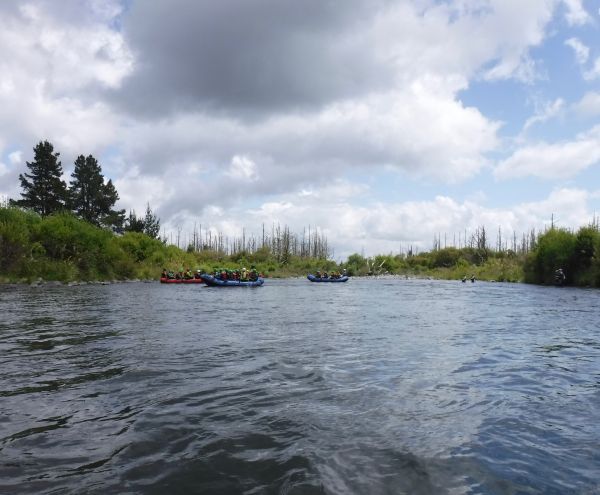 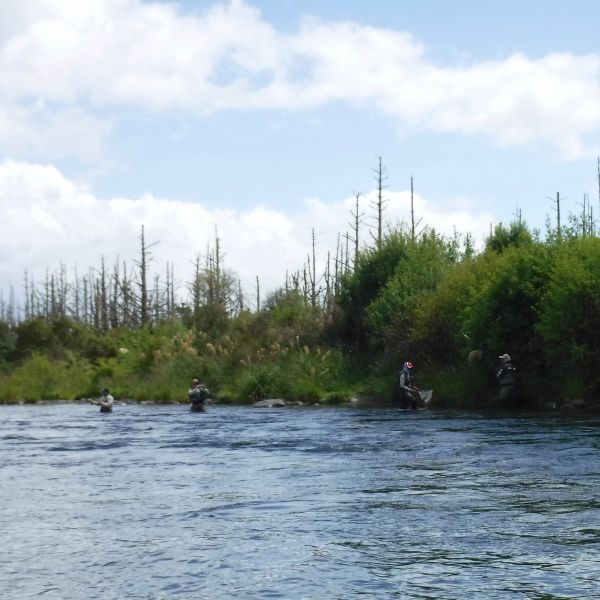 The wet weather they'd forecast all week turned out to be nothing more than a few heavy showers and the flows never got above thirty cumecs. It did however put a slight milky tinge into the river ... although it's still very much a case of summer tactics for the best results. The wet weather they'd forecast all week turned out to be nothing more than a few heavy showers and the flows never got above thirty cumecs. It did however put a slight milky tinge into the river ... although it's still very much a case of summer tactics for the best results.
Nowhere near as many anglers on the Tongariro this week. In fact I've seen more rafters than fishermen when I've been upriver. At this time of year the rafting companies are busy with end of term school trips. And its not unusual to have six or seven rafts drift past packed with excited kids enjoying a day out on the water.
My last few outings I've started early in Judges or the Braids and then headed upriver, first of all to Boulder Reach. The rafts usually appear in this stretch late morning so I try and get in there by ten which gives me an hour or so of undisturbed fishing before they show up.
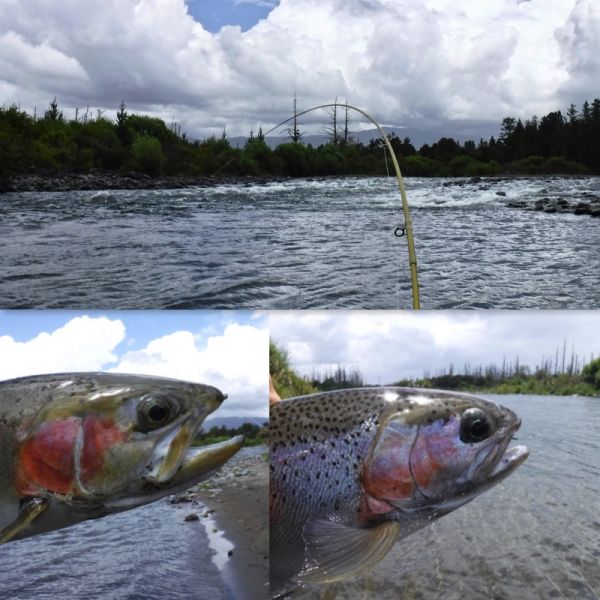 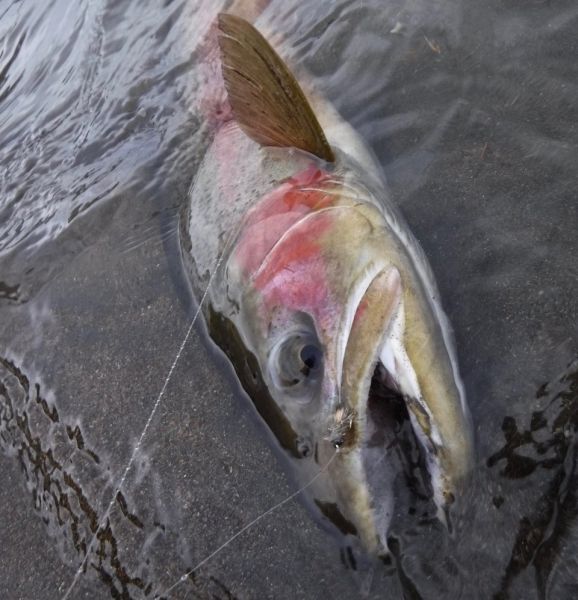
This pool has changed a lot the last couple of years...particularly the true left. The river bed used to be littered with slippery rocks, which made wading uncomfortable and it was easy to take an unexpected dip here. But now you can wade out to the seam which runs the length of the pool without a problem. And I've had some fun sessions there the last couple of weeks.
You'll often see guides here too but they're usually on the TRB because that gives them options and easy access to pools further upstream. I don't mind either side but since the changes I think the TLB has the edge, probably because it better suits some of the nymphing methods I enjoy.
Up until a few years ago the bottom half of the pool was probably the most productive whichever side you were on. But now as far as I'm concerned give me the top half any day.
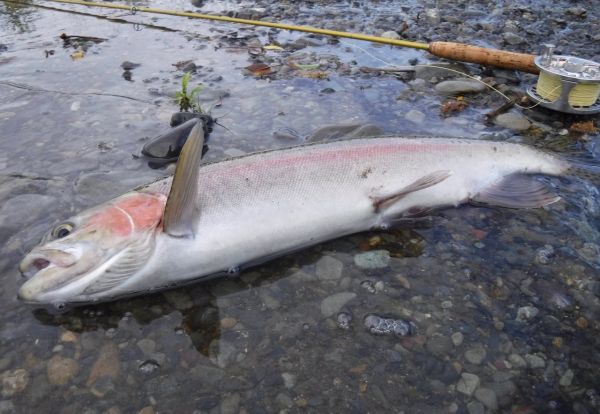 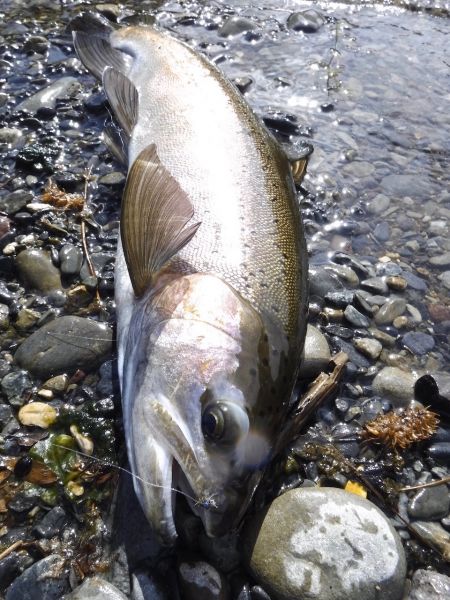
The Braids is another stretch which has been particularly kind to me this year.
An early start here is a must to get the best of it, summer or winter ... albeit for different reasons.
Because its become so popular again during the winter runs you need to set the alarm early in order to get into the better spots first.
When the runs are in full swing cars are often parking up in Herekieikei Street before it gets light. And this easy access means the whole place soon fills with anglers. So if you're not up and about at "sparrows" you'll be disappointed.
During the summer months when the river is lower the fishing gets a lot harder once the sun gets on the water and things warm up. So it pays to get an early start because it often doesn't switch on again until late in the afternoon.
There's still plenty of typical post spawning rainbows to be caught there and this year I think I'll fish it right through because I spotted a few browns hanging around there last summer.
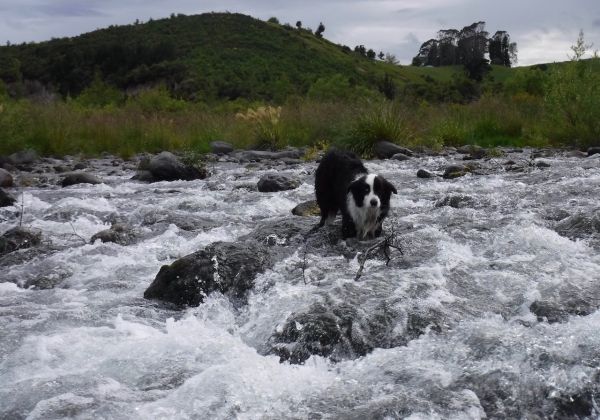 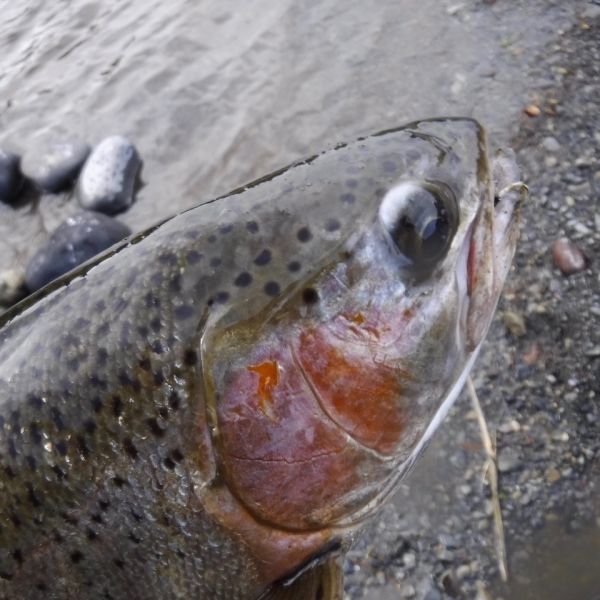
My other early morning starting place this week has been Judges. There's no doubt it was getting hammered. But the last couple of times I've been there I've had it all to myself again.
Like everywhere at present the fish are not quite as good as they were. But there's enough of them to keep it interesting, and from now on there's always the chance of a brown.
The top end of the pool has also altered in recent years and has evolved into a very attractive piece of water...for fish and fishos alike. I know one thing ... "my mate" is never far away when I'm in there just in case he's needed to "help" me land a fish or two.
This is another spot where "white caddis" have been really effective lately.
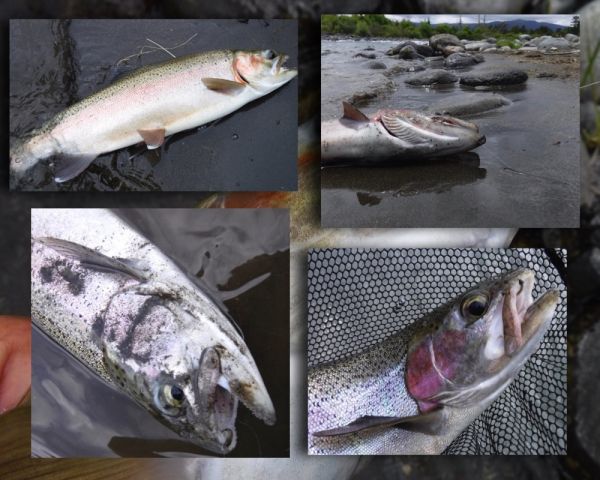 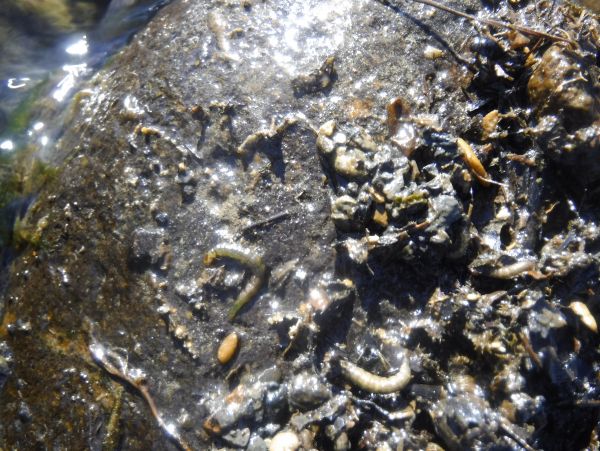
The fast flowing water at this end of the pool is perfect habitat for all kinds of aquatic insects.
On the underside of just about any rock you care to turn over you'll find the "big three". That's mayfly, stonefly and of course all sorts of caddis. The latter are extremely important for Tongariro trout, probably more so than any of the other insects common in the river. One of the first things I did when I originally started fishing the Tongariro was to lift up a few rocks to see what insects were on the underside. It was pretty much as I expected and although I'm no entomologist I recognised some of the caddis species straight away...or thought I did!
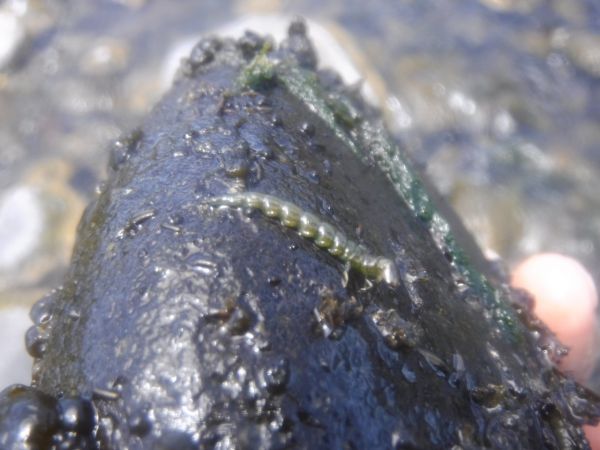
If you asked anglers in the UK to identify the caddis above most of them would say Rhyacophila.
There are fly-fishers who have an exhaustive knowledge of the insect life in our rivers and streams. It takes a lot of time to educate yourself in this way and I have nothing but admiration for them.
But the majority {myself included} have just a basic understanding of their life cycle etc. For my part I don't think it's particularly important to know the scientific name of every insect we're likely to come across ... after all the fish couldn't care less what they're called. However, knowing a little bit about them and the way trout interact with the terrestrial and aquatic bugs in the river will help us make decisions that should put more fish on the bank.
I also think it's important you do your best to get things right when you're writing a fishing blog. One of my New Zealand fishing mates and I have disagreed over the identity of this caddis for years. But after consulting one of his reference books he thought it was probably Hydropsyche Colonicus. Although he also mentioned that the name may have been changed around twenty years ago.
The problem I had with that, was that as far as I was aware all Hydropsyche larvae had gills. Usually along the underside of the abdomen ... whereas "Rhyacs" don't ... because they absorb the oxygen they need through their outer body wall. Nevertheless you do begin to doubt yourself. So the next time we fished together I turned over a rock and picked off one of the "mystery" caddis to show him.
His eyesight is far better than mine and he confirmed ... no gills.
In the past Landcare Research NZ has helped me out with this sort of thing so I wrote to them again and one of their scientists Dr Ronny Groenteman suggested I contact Jon Harding, a professor in stream biology at Canterbury University and email him a photograph ... so I did.
A few hours later I had this reply for which I'm grateful:
"Hi Mike,
Yes this is a predatory free living caddisfly. It's actually a Hydrobiosid (a Southern Hemisphere family closely related to the Rhyacophilids). We have nearly 100 species of hydrobiosidae in New Zealand.
About 95% of the freshwater invertebrate species we have in NZ are endemic to NZ. So most of the photos etc you find online will not be NZ species (or even families). If you were able to look at the Hydrobiosid under a microscope you would see that their first pair of legs actually have pincers (like a crab).
The net spinning caddisflies like Hydropsyche (again in NZ they are a different genera usually Aoteapsyche) do have gill tufts along their abdomen. These caddis live in a little stone house and build a goal post net infront of their house, capturing prey drifting into their nets.
Trout like both of these groups of caddis, and I'm sure both of these are probably abundant in the Tongariro.
Regards Jon"
Now that I knew exactly what I'd been looking at since 2005, I found as much info as I could about them. Hydrobiosidae caddis larvae are not only predatory but are extremely aggressive when other macro invertebrates get too close.
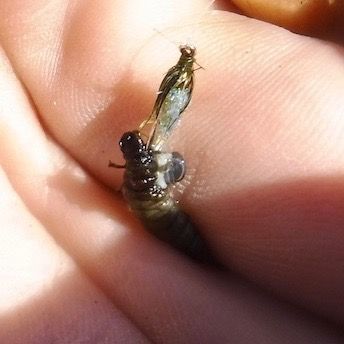
There is a thriving caddis population in the Tongariro and over the years I've posted pics {like the one above} of caddis larvae that I've found impaled on the end of one of my flies when I've retrieved the line to recast.
I've always assumed that there were often so many of them in the river that I'd managed to snag one off the bottom. But when this happens they're nearly always on the lighter, smaller trailing fly ... not the bomb. This throws up an interesting question. Bearing in mind their aggressive behaviour ... maybe I'm not fluking them off the bottom at all ... could it be they're actually attacking the nymph?
If you're interested in learning more about some of the insects you're likely to find in the rivers and streams here in New Zealand, have a look at this page on the NIWA site www.niwa.co.nz
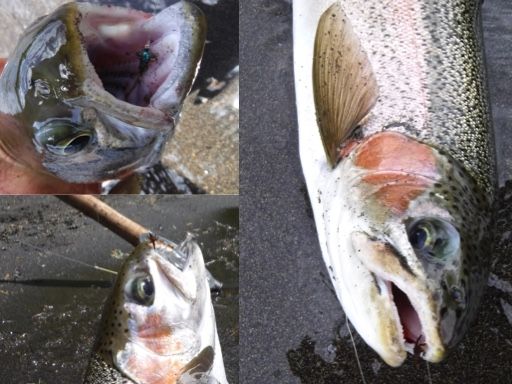 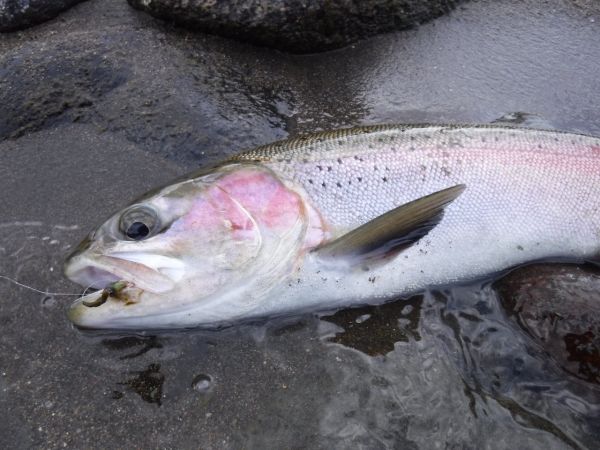
Just about everything in the box seems to be working at the moment and I even dug out the Lively Legz again this week.
Lighter coloured caddis larvae are worth trying but so is a green pupa. With so many recovering rainbows in the river dead set on feeding up, you can't go wrong and there are fish everywhere.
.
Looks like more unsettled weather to come but at this stage there's no significant rainfall predicted here in paradise. So it's likely to be sunshine and heavy showers again for us.
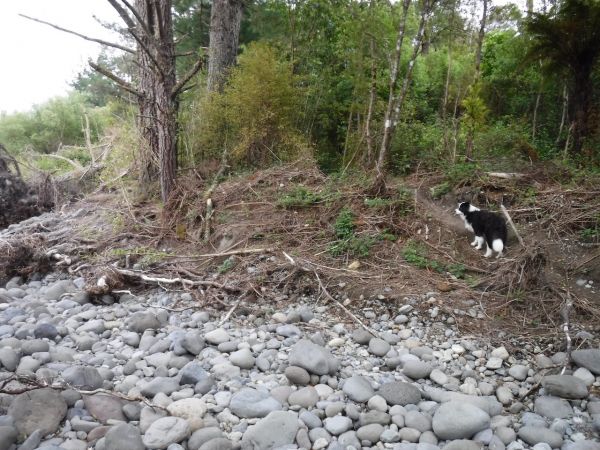
Have a great week guys
Mike |
|
|
| Back to Top |
|
|
|
|
|
|
|